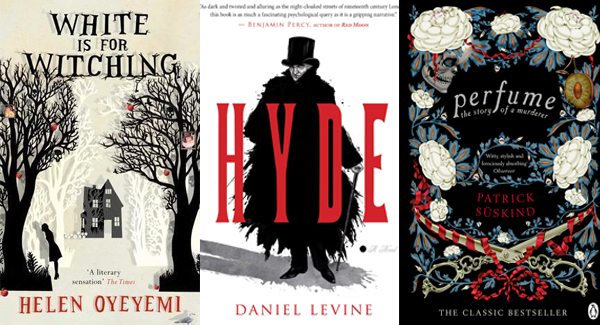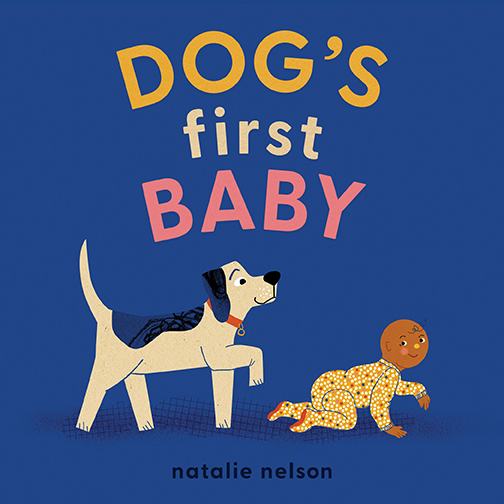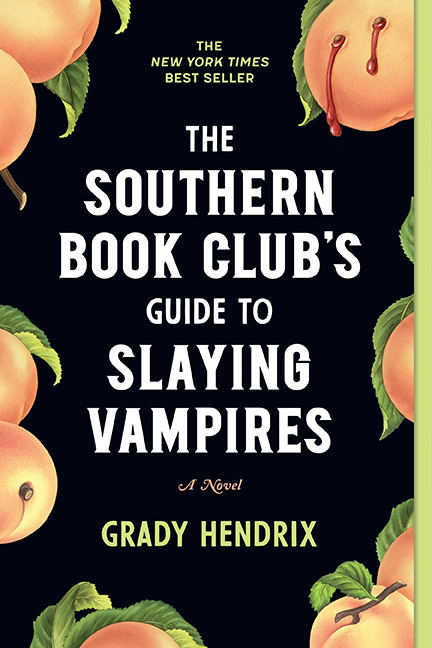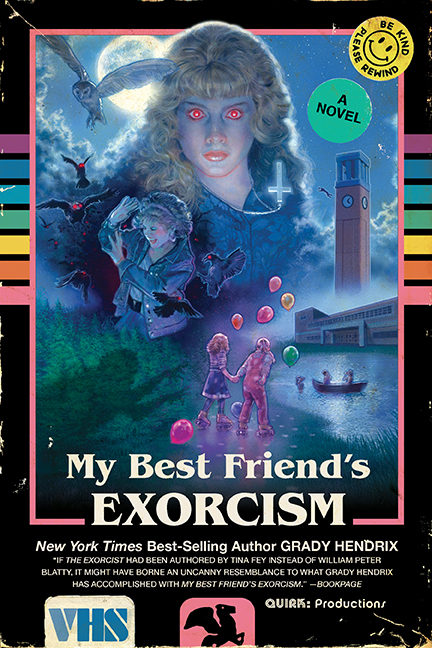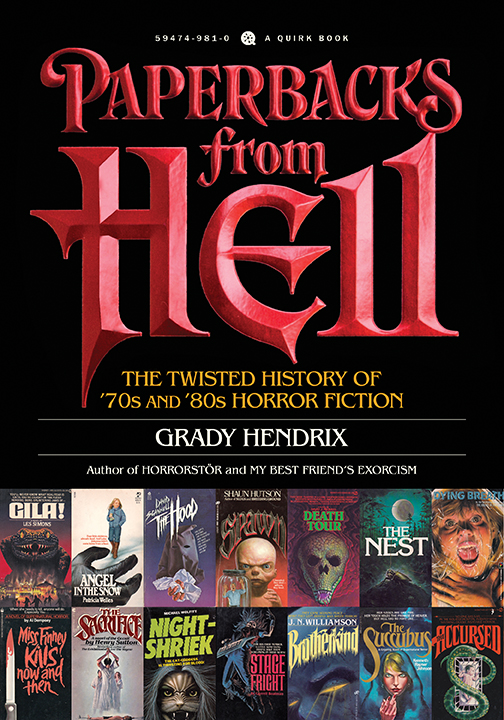Our Blog
Fantasy Novels to Treat Your Game of Thrones Withdrawal





Posted by Margaret Dunham
Oh My Goth: A Roundup of Modern Day Gothic Literature
Recipe for traditional Gothic literature: take one part decay (of surroundings, society) and add a heaping dose of repression. Next? A few dashes of melodrama, a sprinkling (or, in some instances, a whole cup) of romance, and one fall from grace. Shake well, top with a floater of eeeevil, and imbibe on a Scottish moor.
But things have changed since the 18th century, when the first Gothic tropes reared their dramatic heads. The genre has evolved into a more psychological horror, with the atmosphere as much a character as the acting characters themselves, giving the reader the ability to indulge in the horror of the mind. What we conjure up when we’re alone in the dark is often far more terrifying than reality.
Ready to lose some sleep and question your sanity? Who isn’t, right? Cozy up in the study with a dwindling fire, a glass of port, and one of these modern Gothic novels.
White is for Witching, Helen Oyeyemi (2009/2014 reprint): “Please tell me a story about a girl who gets away.” With fairytale-esque shades of Shirley Jackson’s We Have Always Lived in the Castle and The Haunting of Hill House, a pair of twins gradually descends into varying forms of madness. Add one creepy house on the cliffs of Dover, an exotic disease, and a fractured, challenging narrative, and ta-da! Neu-Goth.
Perfume: The Story of a Murderer, Patrick Süskind (1985): Jean-Baptiste Grenouille is the most repulsive of protagonists. Born in the middle of London’s fish markets in 1738, hated by all who attempt to raise him, hunched and weasley, Grenouille has a vampiric need for scent. As in, he kills for it. Life is not kind to our Grenouille, but Grenouille is not kind to life. When he falls in love, we wonder if redemption is on the horizon. But alas – there’s only possession and obsession, the earmarks of gothic literature.
Hyde, Daniel Levine (2014): A re-working of Robert Lewis Stevenson’s Strange Case of Dr. Jekyll and Mr. Hyde, Levine’s Victorian London is a character as equally weighted as Edward Hyde/Henry Jekyll himself. The city easily hides (see what I did there?) man’s depravity, from the ditches of Soho to the Leicester Square manse where Jekyll resides. Props such as Hyde’s top hat are used to epic success. And by the end, you may be confused as to who, exactly, is supposed to be the bad guy.

Penpal, Dathan Auerbach (2012): A novel that first appeared as a series of interconnected stories on Reddit’s r/nosleep forum, Penpal starts with the sound of footsteps: “soft footsteps on a carpeted floor.” While carpet is a foreign concept to the traditional Victorian setting of a gothic novel, nightmares and the blurring of reality/fantasy is not, and Auerbach does that well. If you want to read the original stories, Creepypasta has serialized them here.
Night Film, Marisha Pessl (2013): Murder, suicide, asylums, Satanism, cults, overuse of italics – Night Film has it all. The tale of a reclusive, mysterious horror film director opens with his daughter’s death, and plunges a can’t-leave-well-enough-alone journalist into a dark underworld in search of answers. As in many gothic works, the most dominant characters – Stanislas Cordova and his daughter Ashley – barely make appearances, yet they drive the entire story.
Rustication, Charles Pallister (2013): Setting: a remote mansion in England, surrounded by marsh and mud. An opium-addicted son is unceremoniously sent home – or rusticated – from Cambridge after his father’s mysterious death to find his mother and sister acting peculiarly. Neither will speak of his father. His sister wants him gone immediately. And what about those late-night footsteps in the hallway? Seems eeeevil is afoot….
What’s your favorite modern Gothic novel?
Posted by Carrie Jo Tucker
How to Be Awesome at Sneaking In More Reading Time (Without Getting Fired)
Photo via Blogging Cage
My friends know me as The Reader. They never call me this to my face, but my phone is filled with texts asking for book recommendations, silences are filled with questions about what I’m reading, and folks who come over to my apartment often leave with something from my library tucked under their arm. (I’ve lost more books than I care to admit this way.) Since 2010, I’ve read fifty-two books a year. Give or take. I just love books so much, guys.
Over the years, I’ve read magazine articles and blog posts listing ways to sneak in more reading time. And they’re great. But recently, I’ve been seeing tips that include keeping an ebook open on your desktop at work or going for a “cigarette break” with your novel. And I know that if I tried to pull something like that at work, I’d be called into a meeting to discuss my job performance. So here are some ways I sneak reading into my day – without getting fired.
Posted by Danielle Mohlman
How to Tuesday: How to Make Homemade Butter Beer


Sarah Shotts is a blogger, vlogger, and “nerdlywed.” Recently married, she blogs about living a nerdy life as a newlywed on her blog. She also vlogs about all things geeky on the Swot Sisters Youtube channel she created with her sister Mary. When she’s not making stuff on the internet she’s busy teaching theatre classes and doing wedding photography and video.
Posted by Sarah Shotts
Banned Books Week: Why I Read Lord of the Flies Every Five Years
I was probably 11 or 12 the first time I read William Golding’s Lord of the Flies, and ever since then I’ve read the book about every five years. Why do I keep coming back to it? There’s something I can’t shake in the story—the slow descent from order to chaos, the images it conjures of a society created entirely by boys, and of course the characters: the wise Ralph, the alluring and dangerous Jack, the annoying (but ultimately correct) Piggy.
Because I am who I am, I can’t help crossing Lord of the Flies in my mind with Shakespeare’s Tempest. Both start with a wreck and take place on an island. If Lord of the Flies had started with a shipwreck instead of a plane crash, one could imagine Prospero’s daughter Miranda looking on with fear:
Miranda: The sky, it seems, would pour down stinking pitch,
But that the sea, mounting to the welkin's cheek,
Dashes the fire out. O, I have suffered
With those that I saw suffer: a brave vessel,
Who had, no doubt, some noble creature in her,
Dash'd all to pieces. O, the cry did knock
Against my very heart. Poor souls, they perish'd.
Had I been any god of power, I would
Have sunk the sea within the earth or ere
It should the good ship so have swallow’d and
The fraughting souls within her.
In this version, Caliban goes around planting fear and unrest among the boys. Ariel tries as hard as he can to undo Caliban’s work, but ultimate it’s too late: where Tempest moves from chaos to order and resolution, William Shakespeare’s Lord of the Flies turns from relative order to chaos and destruction. Prospero’s efforts at pacification fail, and only a passing ship manages to restore order and rescue the boys. This becomes the Anti-Tempest, the one where things don’t work out in the end.
And maybe that’s why I loved Lord of the Flies, even as a middle schooler. Because sometimes things are messy, sometimes “happily ever after” isn’t a thing. Sometimes everything goes to hell and all the adults can do is look away:
The tears began to flow and sobs shook him [Ralph]. He gave himself up to them now for the first time on the island; great, shuddering spasms of grief that seemed to wrench his whole body. His voice rose under the black smoke before the burning wreckage of the island; and infected by that emotion, the other little boys began to shake and sob too. And in the middle of them, with filthy body, matted hair, and unwiped nose, Ralph wept for the end of innocence, the darkness of man’s heart, and the fall through the air of the true, wise friend called Piggy.
The officer, surrounded by these noises, was moved and a little embarrassed. He turned away to give them time to pull themselves together; and waited, allowing his eyes to rest on the trim cruiser in the distance.
Posted by Ian Doescher
Banned Books And The Fandoms That Love Them
Posted by Brian Morell
